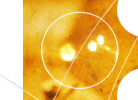














Not to be confused with Pop Rocks Pop rock (also typeset as pop/rock[4]) is a fusion genre characterized by a strong 🍎 commercial appeal,[5] with more emphasis on professional songwriting and recording craft, and less emphasis on attitude than standard rock music.[6][7][1] 🍎 Originating in the late 1950s as an alternative to normal rock and roll, early pop rock was influenced by the 🍎 beat, arrangements, and original style of rock and roll (and sometimes doo-wop).[1] It may be viewed as a distinct genre 🍎 field rather than music that overlaps with pop and rock.[4] The detractors of pop rock often deride it as a 🍎 slick, commercial product and less authentic than rock music.[8] Characteristics and etymology [ edit ] Much pop and rock music has been 🍎 very similar in sound, instrumentation and even lyrical content. The terms "pop rock" and "power pop" have been used to 🍎 describe more commercially successful music that uses elements from, or the form of, rock music.[9] Writer Johan Fornas views pop/rock 🍎 as "one single, continuous genre field", rather than distinct categories.[4] To the authors Larry Starr and Christopher Waterman, it is 🍎 defined as an "upbeat variety of rock music" represented by artists and bands such as: Andy Kim, the Bells, Paul 🍎 McCartney, Lighthouse, and Peter Frampton.[10] The term pop has been used since the early forties to refer to popular music in 🍎 general, but from the mid-1950s it began to be used for a distinct genre, aimed at a youth market, often 🍎 characterized as a softer alternative to rock and roll.[11][1] In the aftermath of the British Invasion, from about 1967, it 🍎 was increasingly used in opposition to the term rock, to describe a form that was more commercial, ephemeral and accessible.[12]




























